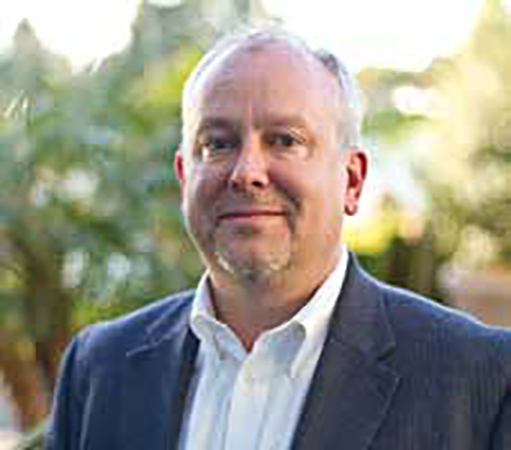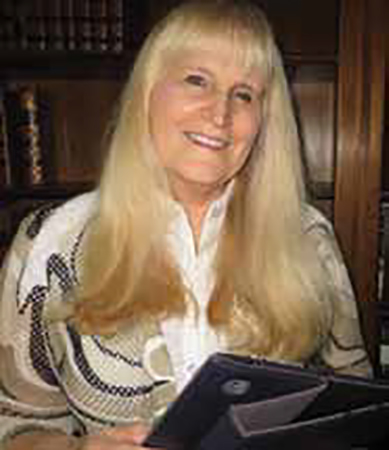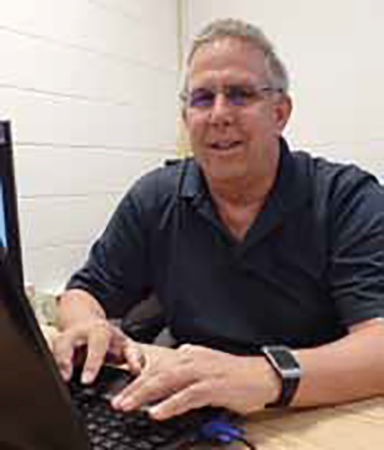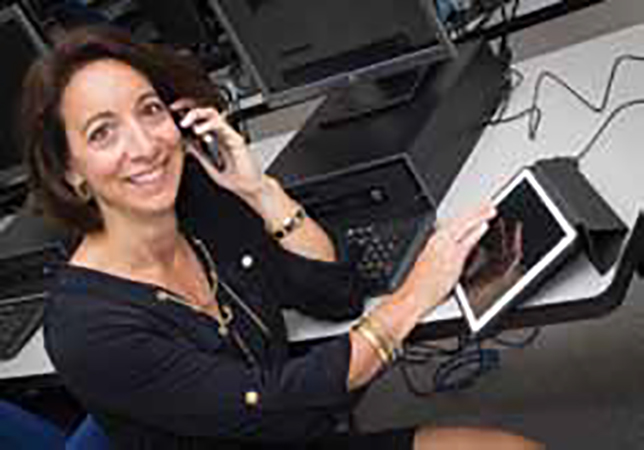Professional Learning
• It’s easy to point out the flaws in mass-produced professional development (PD). Generally, one-size-fits-all means one-size-fits-no-one, and teachers leave sessions confused, demoralized, and unfulfilled. But PD doesn’t have to be that way. Check out our best practices from best practitioners across the U.S.

“In a perfect district, every staff member would get some type of individualized PD each year. I think letting each staff member pick from a range of options for institute days is effective and motivating for most teachers. Evaluations from those days tend to be stronger than when the principals determine the training. Mapping out an individual, long-term plan (i.e., two years or longer) for each staff member is the strongest approach to sustained effective PD. When done across the district by all supervisors, it can make a huge impact in a short time. One of the best PD tools is to loudly support teacher success. When I visit classrooms and see something going well, I let the teacher and the principal know.”
—Steven M. Baule, superintendent, North Boone (IL) CUSD 200, SchoolCIO Advisor
His Top PD Tools:
• AASA Executive Briefing (www.multibriefs.com/briefs/aasa)
• ELN-Ed Leaders Network (www.edleadersnetwork.org)
• EmergingEdTech newsletter and tutorial videos (www.emergingedtech.com)
“No longer does the mass, one-size-fits-all, sit-and-listen PD have to be the status quo. We can meet teachers where they are, at a time that works for them, and deliver the personal PD they deserve. Technology makes this possible.”

—Chris Aviles, Teacher, Barnegat High School, Barnegat (NJ)
His Top PD Tools:
• Google Drive (drive.google.com): Google Drive’s suite of creation tools is reinventing how teachers collaborate. With Google Drive, they can amass and share resources, including videos, lesson plans, and presentations.
• Voxer (voxer.com): This app provides a freemium walkie-talkie that lets users connect to each other one-on-one or in groups. With the click of a button, teachers can connect instantly to ask questions, share ideas, or give advice via voice, text, or links. It’s like having your PLN in your pocket.
• Schoology (www.schoology.com): This is an LMS typically used to provide blended learning to students. While the paid features are fantastic, Schoology’s free experience is more than enough to turn PD into a personalized experience for every teacher.
Tools and ideas to transform education. Sign up below.

“Schools are struggling to provide customized and personalized PD opportunities for their teachers that will have a lasting impact. PD needs to offer opportunities for teachers to transform traditional experiences and redefine their own learning and, in consequence, their teaching practices.”
—Silvia Rosenthal Tolisano, Curriculum21 Faculty Member, Social Media Coordinator, and Eduplanet21 Program Coordinator
Her Top PD Tools:
• The Blended Coaching Model approach: This approach uses onsite consulting and job-embedded instructional coaching and workshops. These programs are then blended with online coaching, workshops, and feedback that relies heavily on self-directed and self-motivated professional learners to put new learning practices into action.
• The Personal Learning Network (PLN) approach: A PLN is a group of people who guide you in your learning, are a source of advice and resources, share their best practices, and point you to answers and support.
• A blog + Twitter: A blog is reflective and provides a platform for documenting and sharing best practices. When combined with Twitter, it helps teachers grow and maintain a global PLN.

“There are many masters of PD, but I recommend familiarizing yourself with excellent educators like Naomi Harm (http://blog.innovativeeducator.us), Kevin Honeycutt (http://kevinhoneycutt.org), and Shelly Terrell (http://shellyterrell.com) to learn from some of the industry’s best.”
—David Kapuler, Technology Integrator, 21st-Century Educator
His Top PD Tools:
• Education Week Teacher PD Sourcebook (www.edweek.org/tsb/index.html)
• Professional Development for Teachers—Teq (www.teq.com)
• Technology Tidbits: Thoughts of a Cyber Hero (http://cyber-kap.blogspot.com/2014/09/get-your-tech-on.html)
“When I provide PD, I use tools and approaches that innovative educators can effectively integrate into their own teaching and professional learning. What I model must be easy to replicate and free.”
—Lisa Nielsen, Director of Digital Literacy & Citizenship , NYC Department of Education, New York (NY)
Her Top PD Tools:
• Online communities. Whether you use Facebook, Edmodo, Schoology, or Google Communities, it is imperative to have an online community to connect, provide and receive support, and keep conversations going.
• Padlet (http://padlet.com) is a great tool for collaboration, sharing, introductions, exit slips, and more.
• Teacher Effectiveness Portfolio. More districts are using a framework, such as Charlotte Danielson’s (http://danielsongroup.org/framework), to assess teacher effectiveness. Teachers can align their portfolios to the framework by using platforms such as EduClipper, Wikispaces, Padlet, or a blog.

“We differentiate professional learning opportunities for our staff with department-level, teacher-led training sessions that range from face-to-face demos to flipped lessons. Our staff participates in Tech Tuesdays, Wired Wednesdays, and Flipped Fridays—all of which are designed to allow teachers to explore topics of their choice. Additionally, our technology coach uses Edmodo and other social learning communities to promote district-wide collaboration.”
—Marianthe Williams, Director of Technology, River Dell (NJ) Regional School District
Her Top PD Tools:
• Camtasia Studio (www.techsmith.com/camtasia.html)
• Edmodo (www.edmodo.com)
• Jing (www.techsmith.com/jing.html)

“We tend to spend a great deal of time on the specific types of devices we should buy for kids, but rarely do we expend that same thought and effort on how we are going to adequately support teachers in using the devices in class to support their learning goals and objectives. Many times, the technology isn’t being used effectively, or—even worse—the devices go unused. You are only as good as your training and your ongoing commitment to the people willing to make it happen.
We try to focus on growing our own tech experts. In other words, we do everything we can to encourage our staff members to get out into the world of Ed Tech PD as learners and presenters. Organizations such as Computer Using Educators (www.cue.org) provide local opportunities for our staff to develop their skills as trainers. In turn, we create opportunities to teach our own colleagues. This year, we hosted Ed Tech Fest (http://theedtechfest.weebly.com/the-edtechfest-details.html), a free conference that takes place prior to the new school year. The advantage of having local experts as trainers is that people know to whom they can turn for follow-up or additional help. The result is the formation of a team of forward-thinking, like-minded educators who begin pushing one another to make things increasingly better on behalf of children. Our little rural district of 1,200 students has several Apple Distinguished Educators, Google Certified Teachers, and Madera County Teachers of the Year who have presented across the nation and in Europe. And new opportunities, such as writing for Tech & Learning, materialize every day!”
—Bob Nelson, superintendent, Chawanakee (CA) Unified School District

“During PD workshops, it is important to use the tools teachers have in their classrooms. Then they can see the lesson being taught with the same equipment they will be using. My goal is for every person to leave a PD session with several new ideas that they can immediately use in the classroom. Cloud applications have made it easier to share documents, ideas, and lessons with an entire group.”
—Michelle Vance, Gifted Intervention Specialist & PD Technology Instructor, Bucyrus (OH) City Schools
Her Top PD Tools:
• Educreations
• Google Apps for Education
• iTunes U
• Kahn Academy
• Moodle
• ProShow Gold Video Software
• Snagit

“During the last several years, districts have been so focused on teacher evaluation that teacher development has at times been lost. We have made a conserted effort to allow for a PD focus that gives our teachers and administrators time to self-reflect and grow. We have used Teachscape’s video capture tools to allow greater opportunity to collaborate and self-reflect on best practices within the classroom across all the curricular areas.”
—Patrick Field, Chief Academic Officer, Franklin Towne (PA) Charter Schools
His Top PD Tool:
• Teachscape
“PD must advance student learning. The facilitator must be experienced and passionate about what he or she is attempting to support. He or she must honor the many years of educator knowledge that exist in the room. There must also be workshop time that allows for teachers to practice and construct learning opportunities for their students that reflect the pedagogy stressed in the PD. This ensures that teachers walk away with a deliverable, allowing for the learning to be sustained.”

—Michael Gorman oversees one-to-one laptop programs and digital professional development for Southwest Allen County Schools near Fort Wayne (IN)
His Top PD Tools:
• Buck Institute for Education (bie.org): This group is a nonprofit organization that promotes PBL. It is exciting to help teachers understand the importance of driving questions, student need-to-knows, in-depth inquiry, critique and revision, public audience, and student voice and choice. While studying these elements, educators learn the importance of authentic connections relating to their content standards.
• Twitter: When facilitating a Twitter PD session I show how to use the advanced search function to find specific resources and ideas. Twitter also lets teachers learn the importance of a PLC .
“PD is best when it is meaningful and hands-on. Since we are shifting to a blended learning environment, we created a PD session using a blended learning model to provide meaningful PD to our teachers. They began the multi-day session with face-to-face meetings and hands-on experience with the technology they would use. Then they shifted to the online environment during their summer vacation to experience anytime/anywhere learning and participate in the engaging activities we want them to provide for our students. Next, teachers came together to build their courses. This collaboration and interaction strengthened the online course offerings and allowed for many adaptations.

Students are valuable resources in providing PD. Our high school students shared Evernote, TodaysMeet, and Edmodo. They walked the staff through how to use the tools and discussed how the tools can be used in class to make instruction meaningful. Not only was this a great opportunity for teachers, but the embedded coaching was built in the next day in class.
This fall we began offering online evening Webinars. We selected two topics based on teacher feedback. Teachers can log in from home, interact with each other, and learn about tools they can use in their classrooms the next day.”
—Barbara Haeffner, Director of Curriculum and Instructional Technology, Meriden (CT) Public Schools

“My personal best PD comes from blogs, where I can reflect and interact with friends and wanderers sorting through ideas and concepts in their own time and space. Today, we have the ability to develop a learning network that is not restricted by time and place. The tool that works best with blogs is some type of RSS reader. For me, it’s Feedly (https://feedly.com).
Another favorite is hybrid PD days that include a mix of structured sessions and unconference time. Face-to- face experiences are still important and this allows the largest number of people to interact and learn in a couple of different ways. You don’t know what you don’t know, which is why listening to experts who know more than you is important. The unconference model, however, allows participants to go directly to topics of interest and usually invites you to make contributions.
—Dean Shareski, Community Manager for Discovery Education Canada

“There are three components to effective PD—time, engagement, and technology. Our Ed Tech team tries to create PD experiences that engage teachers and follow them back to their classrooms. We do this by offering relevant and timely information and tools that will be valuable to teachers and immediately available for classroom use. We also keep our teachers moving. For example, we will share information on a tech tool and then ask teachers to do an activity using that tool. We also use QR codes, quick polls, and online discussions to keep the conversations flowing.
But good PD doesn’t stop there.
We need to continue our support after the teachers leave the training. To facilitate continued engagement, we use an LMS called Haiku Learning (www.haikulearning.com) that enables us to share resources, successes, and challenges from the classroom. Teachers also use Haiku to post experiences onto a discussion board.”
—Jenith Mishne, Director of Educational Technology, Newport-Mesa (CA) Unified School District
1 0 PD Approaches That Should Follow the Dodo Bird

By Dr. Lisa Gonzales and Dr. Charles Young
Legend has it that the clumsy, inept Dodo Bird met its demise when Dutch sailors hunted it for a snack and eventually ate the breed into extinction. It probably didn’t help that the Dodo Bird liked humans in a manner similar to a puppy dog. However it didn’t have that cuddly, pet-like charm of a puppy that might have saved it. This poor creature certainly did not learn to adapt to its own complex, changing environment. When we look at our own classrooms, our failure to adapt professional development practices in our own dynamic educational environments can result in ineffectiveness and lackluster performance. Here are 10 professional development practices that we recommend go the way of the Dodo Bird:
1. Working Without a Clear Purpose. Professional development opportunities must be anchored in a clearly articulated purpose and desired future state.
2. Operating Without Metrics. Without metrics to gauge the impact on student learning, there is no way to determine if “cool” will result in improvement.
3. Administering One-and-Done Trainings. Despite the prevalence of one-and- done PD, the track record for these trainings actually changing teachers’ practices and increasing student achievement is abysmal.
4. Proceeding Without Administrative Support. Administrators can negotiate the logistics of school schedules, manage teachers’ competing time commitments, and hold teachers responsible for implementing what they learned.
5. Keeping Learning Private. We’ve all learned that the best practice is to train staff and then have them keep that newfound knowledge closely hidden and guarded. Wrong! Have them share!
6. Working Without Support During Implementation. Without support during the implementation phase, it is highly unlikely that the new skills or information will take hold.
7. Expecting Teachers to Pay on Their Own Time and Dime. Districts can purchase teacher time by providing stipends for professional development, paying for substitutes to cover teachers’ classes, reducing the teaching load, or hiring more staff.
8. Making PD Too General or Irrelevant. When time is focused on specific analysis and practice in teachers’ classrooms, a deeper connection is made and the relevance is more evident.
9. Overwhelming the New Teacher. Pacing trainings is critical and should be done when the teacher can see the application of the new concepts and skills with their students.
10. Keeping Success Secretive. We don’t acknowledge and share enough in education environments, and that is particularly evident in professional development. Celebrating accomplishments reinforces that the trainings have been effective, changed practice, and were worth the time and costs.
Dr. Lisa Gonzales is superintendent in the Portola Valley School District in California. Dr. Charles Young is associate superintendent in the Palo Alto Unified School District in California.
